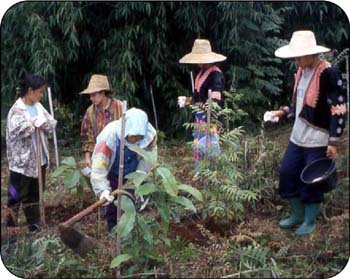Plantations have been the traditional means to address rehabilitation of degraded lands. Putting them into perspective, they have been established and managed for both longer- rotation sawlogs and shortrotation pulpwood. In fact, global plantation estates amounted to 187 million hectares or 1.6% of global land area (FAO 2001). Plantations' main purpose is to meet industrial need for wood and fibre, and to a lesser extent for protection of soil and water, combating desertification, rehabilitating degraded lands, etc. Governments form the biggest owners of plantations (55%), followed by smallholders (25%) and the private sector (20%). Plantations, especially those managed by the private sector, concentrate on production of industrial wood - in 2000 such plantations (covering 0.8% of global land area) supplied 35% of global industrial roundwood, and this is expected to increase.
But changes are now underway. There is evidence that many land managers and other stakeholders are now looking for trees that provide goods for other purposes, as well as establishing plantations that provide a wider variety of services. Researchers across the region have also begun exploring alternative forms of reforestation for cleared and abandoned lands using a much wider range of silvicultural approaches.
FAO, for example, has been promoting "assisted natural regeneration (ANR)" of Imperata grasslands for several years. Fire control, restricted grazing, suppressing Imperata growth and community involvement are key elements of ANR which is a simple, inexpensive and effective technique to convert these grasslands into more productive forests (Dugan et al. 2003).

After 6 years... 29 planted framework tree species have restored forest structure and ecological function, creating a closed canopy and dense leaf litter to this Thai forest. Wild animals such as civets and hog badger have returned and bird species richness has increased threefold.

Hmong hill tribe villagers of Ban Mae Sa Mai in Thailand... they weed and apply fertilizer around planted framework tree species to restore biodiversityrich evergreen forest in degraded forestland.
Plantations are increasingly being established and managed for longer-rotation sawlogs and not just short-rotation pulpwood. In some cases, reforestation is being carried out using high-value native tree species, and not just fast-growing "miracle" species (Appanah and Weinland 1993, Banerjee 1995, Krishnapillay 2002, Do Dinh Sam and Nguyen Hoang Nghia 2003).
And in some cases, reforestation is being carried out to provide ecological services such as watershed or biodiversity protection, rather than just timber production (Lamb and Gilmour 2003).